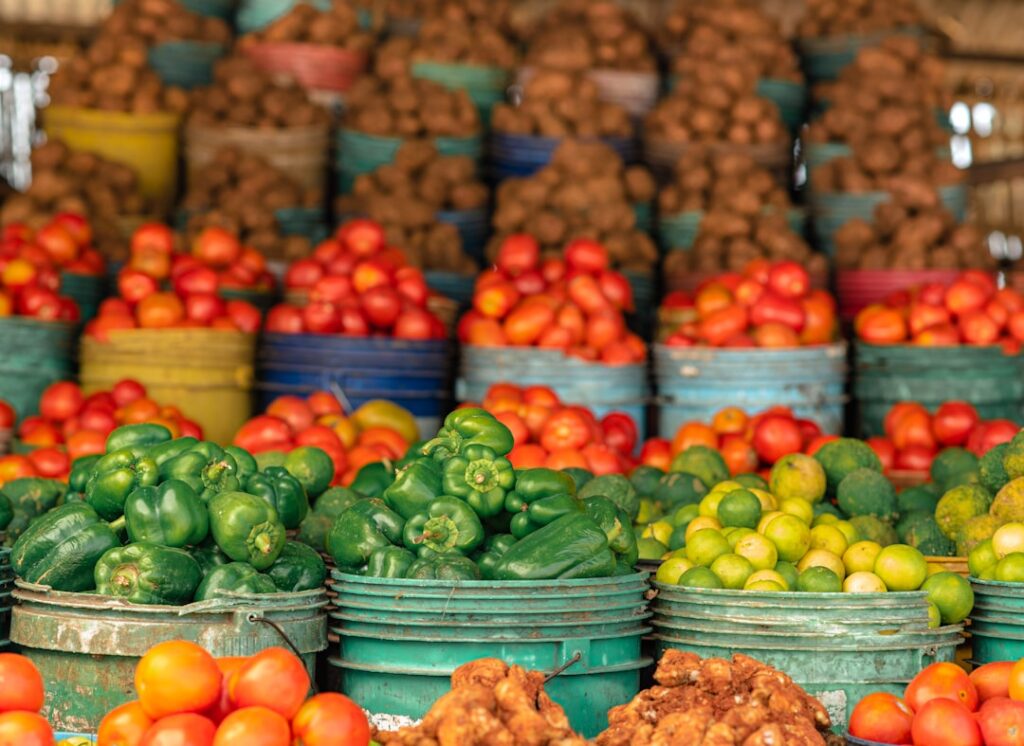Your Journey into Sustainable Eating
Want to know how to adopt sustainable food practices? It’s simpler than you might think. Here’s a quick guide to get you started:
- Reduce food waste: Use what you buy, and compost what you can’t.
- Eat more plants: Shift your diet towards vegetables, fruits, and legumes.
- Shop local & seasonal: Support nearby farmers and choose foods ripe in your area.
- Choose wisely: Look for products from farms and businesses committed to environmental health.
Our planet is a busy place. By the year 2050, it will be home to another 2 billion people. That’s a lot more mouths to feed! This means how we grow, deliver, and eat our food needs a big change.
Sustainable food practices are about making sure we can feed everyone today without ruining things for tomorrow. It means thinking about our health, the planet’s health, and making sure there’s enough good food for everyone, always. It’s about building a better food system from farm to fork.
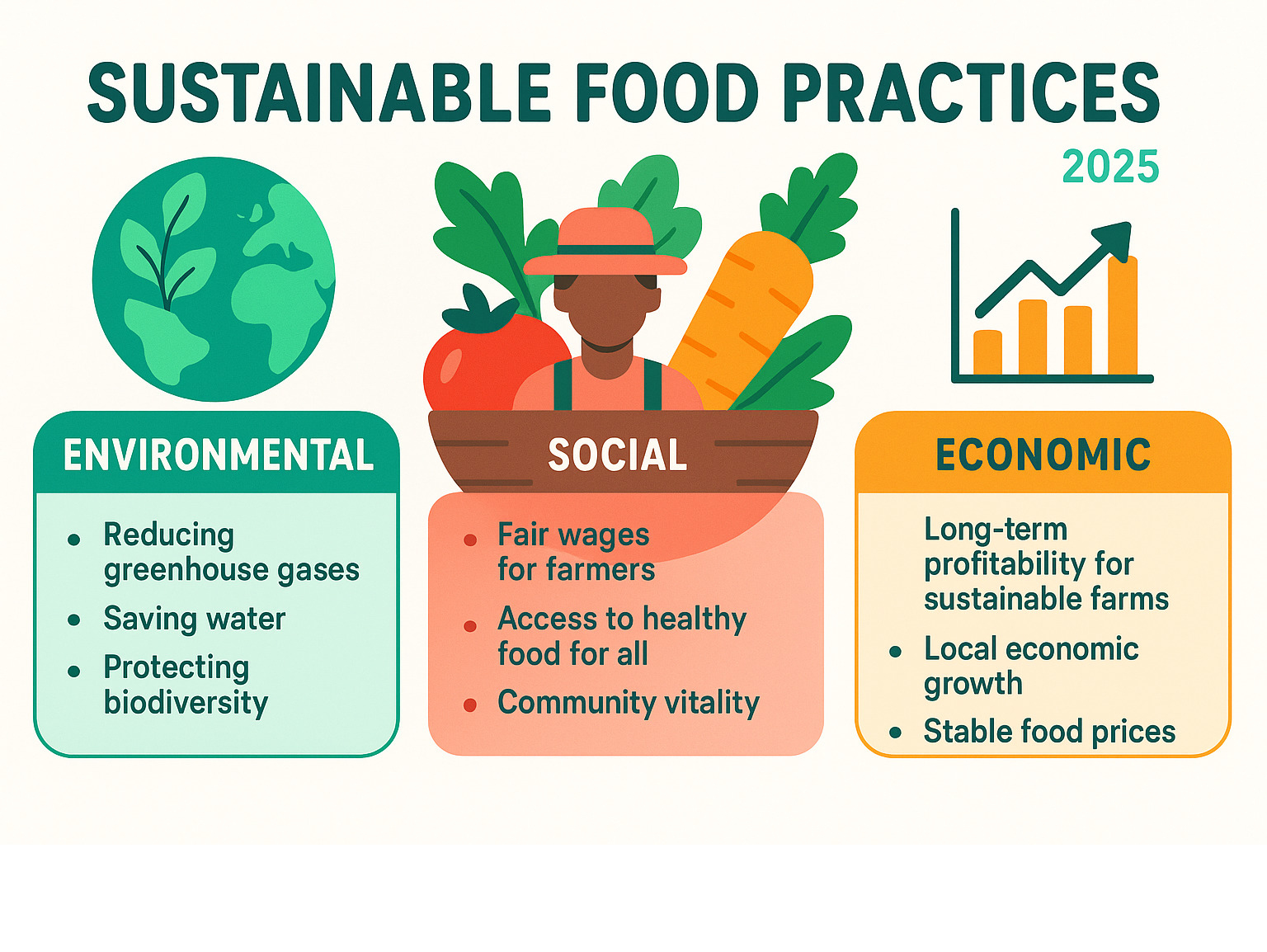
Sustainable food practices terms simplified:
The Urgent Case for Sustainable Food: Our Planet on a Plate
The way we produce and consume food has a massive impact on our planet. The journey from farm to fork is complex, and adopting sustainable food practices is an urgent necessity for the future of our world.
Our current global food system is a major contributor to environmental challenges. Food production accounts for about 30% of global greenhouse gas emissions, occupies 40% of global land, and uses 70% of freshwater resources. This leads to climate change, deforestation, and water scarcity, and it’s the largest factor threatening species with extinction.
The EAT-Lancet Commission provides a scientific framework for a “planetary health diet,” a flexible eating pattern that benefits both people and the planet, highlighting how our food choices affect the Earth’s well-being.
Another critical issue is food waste. Roughly one-third of all food produced globally is wasted. If food waste were a country, it would be the 3rd largest greenhouse gas emitter. When food rots in landfills, it produces methane, a potent greenhouse gas. This waste also represents a massive loss of the resources used in production—water, energy, land, and labor. Waste occurs at every stage, from farm to fork, making its reduction a key goal for sustainability.
The Problem with Our Plates: Meat, Monoculture, and More
Certain foods have a disproportionate impact. The livestock industry alone generates nearly 15% of all man-made greenhouse gas emissions, with global meat consumption soaring in recent decades. This puts immense pressure on land and resources.
Beyond meat, our food supply lacks biodiversity. A staggering 75% of the world’s food comes from just 12 plants and five animal species. This monoculture approach makes our food system vulnerable to pests and climate shocks and depletes soil nutrients, increasing reliance on chemical fertilizers.
Our oceans are also under pressure, with about 94% of fish stocks either overfished or fished at their maximum sustainable limit. This threatens marine ecosystems and the livelihoods that depend on them. Finally, industrial farming practices often lead to soil degradation, stripping the land of its vitality and compromising our ability to grow food in the future. Addressing these issues is central to building a better food system.
Your Step-by-Step Guide to Sustainable Food Practices at Home
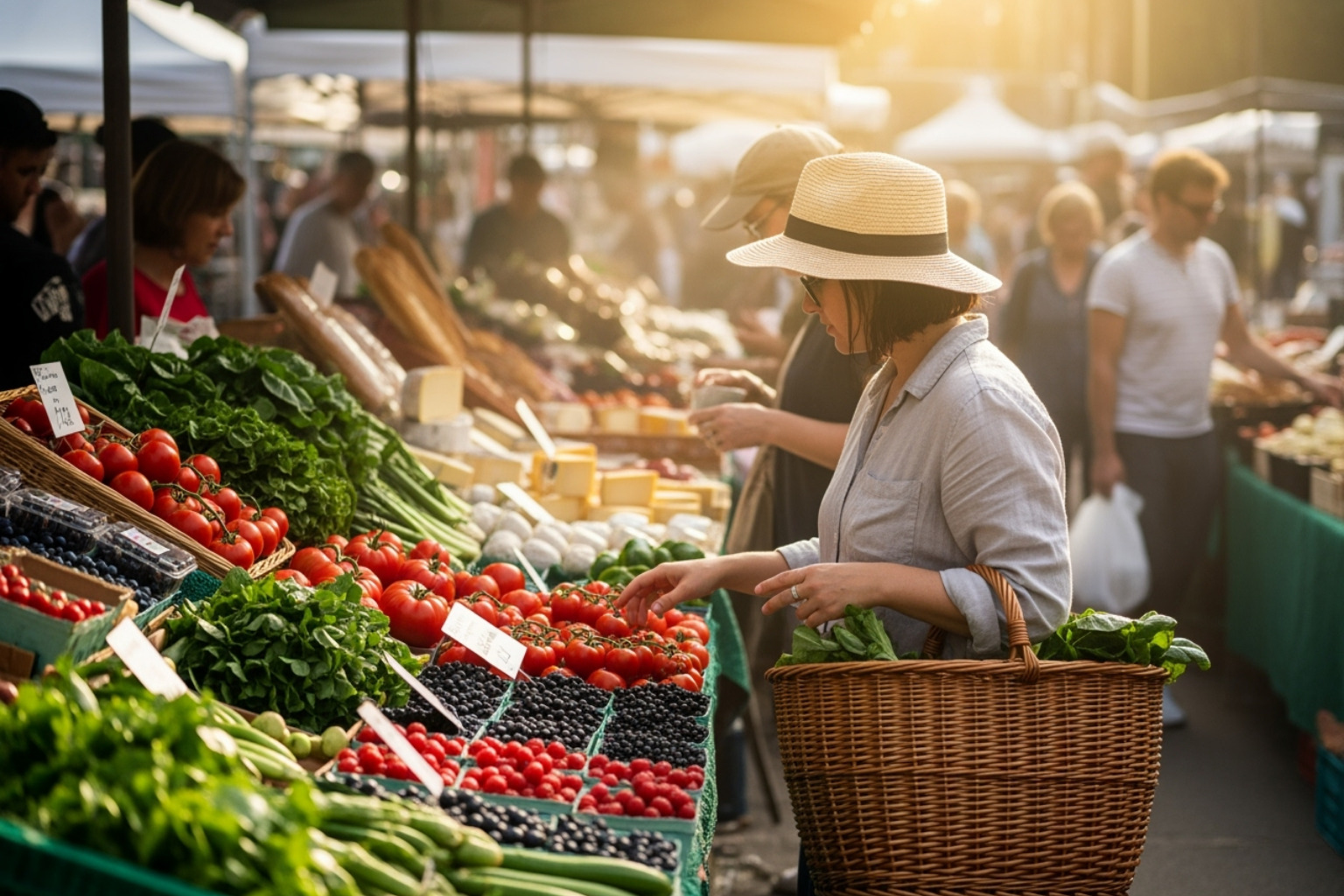
Now that we understand the urgency, let’s focus on what we can do. Our individual choices hold immense power, and every meal is an opportunity to make a difference. By adopting practical steps, we can contribute to a more sustainable future from our own kitchens.
Step 1: Accept a Plant-Forward Diet
One of the most impactful changes is shifting towards a plant-forward diet. This means prioritizing vegetables, fruits, whole grains, and legumes, while reducing consumption of red and processed meats. Meat and dairy production are resource-intensive, so this shift can dramatically lower your carbon footprint. Experts recommend that for a planetary health diet, global consumption of red meat and sugar should decrease by 50%, while consumption of fruits, nuts, and vegetables must double. A plant-rich diet is also linked to a lower risk of heart disease and type 2 diabetes. For guidance, the USDA’s MyPlate Program for dietary guidance is an excellent resource.
Here are some simple plant-based meal swaps:
- Instead of a beef burger: Try a veggie burger made from beans or mushrooms.
- Swap out some chicken: Use chickpeas or tofu in stir-fries and curries.
- Meatless Mondays: Dedicate one day a week to entirely plant-based meals.
- Snack smarter: Reach for an apple with peanut butter or a handful of almonds.
Step 2: Become a Food Waste Warrior
With about 30% of food being wasted globally, we can make a huge difference at home. Becoming a food waste warrior means being mindful of what we buy, store, and use.
- Meal planning: Plan your meals for the week to buy only what you need.
- Proper food storage: Learn how to store different foods to extend their shelf life.
- Understanding date labels: “Best by” dates are often about quality, not safety. Trust your senses.
- Using leftovers creatively: Turn leftovers into new meals, like a frittata or salad. Use bruised fruits and wilted veggies in stews, smoothies, or stocks.
- Composting: Compost unavoidable food scraps like peels and coffee grounds. This returns nutrients to the soil and keeps organic waste out of landfills. Many communities offer composting services. Find more Tips for Preventing Wasted Food At Home.
Step 3: Shop Smarter and More Sustainably
Our shopping habits influence food producers. By making conscious choices, we can support more sustainable food practices.
- Buy local: This reduces “food miles,” meaning less fuel consumption and fresher food. It also supports our local economy, a great benefit for those with access to regional farms.
- Eat seasonal produce: Seasonal food requires less energy to grow and transport, is often more flavorful, and is typically more affordable.
- Visit Farmers’ markets: These are fantastic places to buy local, seasonal produce directly from growers and learn about their farming methods.
- Join a Community Supported Agriculture (CSA): Purchase a “share” from a local farm and receive regular boxes of fresh produce. It’s a direct connection to your food source. You can Find Local CSAs in your area.
- Reduce packaging: Opt for loose produce and bring reusable bags. Food packaging contributes significantly to plastic waste.
- Explore local culinary events with us: The Dining Destination highlights local, seasonal, and sustainable options. Explore local culinary events with us to find farmer’s markets and food festivals that celebrate sustainable sourcing.
Beyond the Kitchen: Sustainable Practices in Agriculture and Food Service
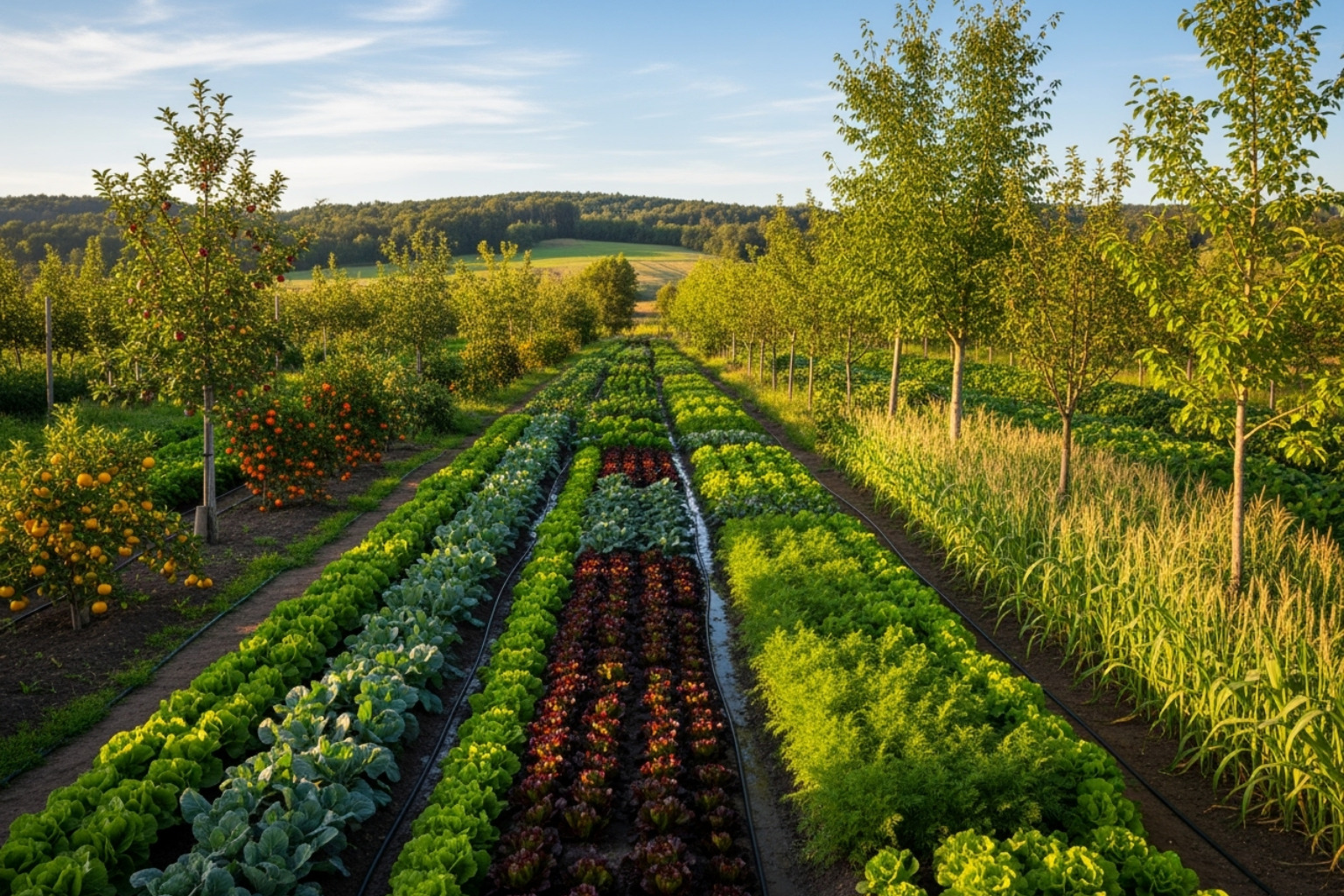
While our actions in our own kitchens matter, creating a truly sustainable food future requires broader changes in agriculture and food service. When farms and restaurants adopt new methods, they can feed millions while protecting the planet. It’s about building a better food system for everyone.
Reimagining the Farm: Key Agricultural Methods
Instead of relying on chemicals and monocultures, many farmers are adopting sustainable food practices that work with nature. You can Learn more about sustainable agriculture from the USDA to see how this movement is growing.
- Regenerative agriculture aims to improve soil health each year by minimizing soil disturbance, using cover crops, and managing grazing. This can help farms store carbon in the soil.
- Agroforestry integrates trees into farmland, creating diverse ecosystems that prevent soil erosion, support wildlife, and can increase food production.
- Permaculture designs farms that mimic natural ecosystems, creating self-sustaining systems that require minimal external inputs.
- Crop rotation and water conservation are also key. Rotating crops breaks pest cycles and maintains soil fertility, while efficient irrigation techniques conserve a vital resource.
- Soil health is the foundation. Practices like composting build rich, living soil that supports healthy plants and filters water.
Greening the Restaurant: Adopting sustainable food practices in food service
Restaurants have significant power to influence the food system. Around the world, chefs are proving that sustainability is good for business and the planet.
- Sustainable sourcing is key. This means building relationships with local farmers, choosing seasonal ingredients, and supporting producers who use ethical and environmental practices.
- Waste reduction can be dramatic. Smart kitchens track waste, adjust ordering, compost scraps, and donate leftovers, sometimes cutting food waste in half.
- Energy-efficient equipment, like ENERGY STAR appliances, reduces a kitchen’s carbon footprint and utility bills.
- Water conservation through low-flow fixtures and efficient dishwashers saves a precious resource.
- Sustainable food service ware is a complex but important choice. Reusables are always best. When disposables are needed, it’s crucial to understand the realities of local composting and recycling infrastructure. For more, see this Guide to Sustainable Food Service Operations.
The Future of Food: Innovations Shaping a Sustainable Tomorrow
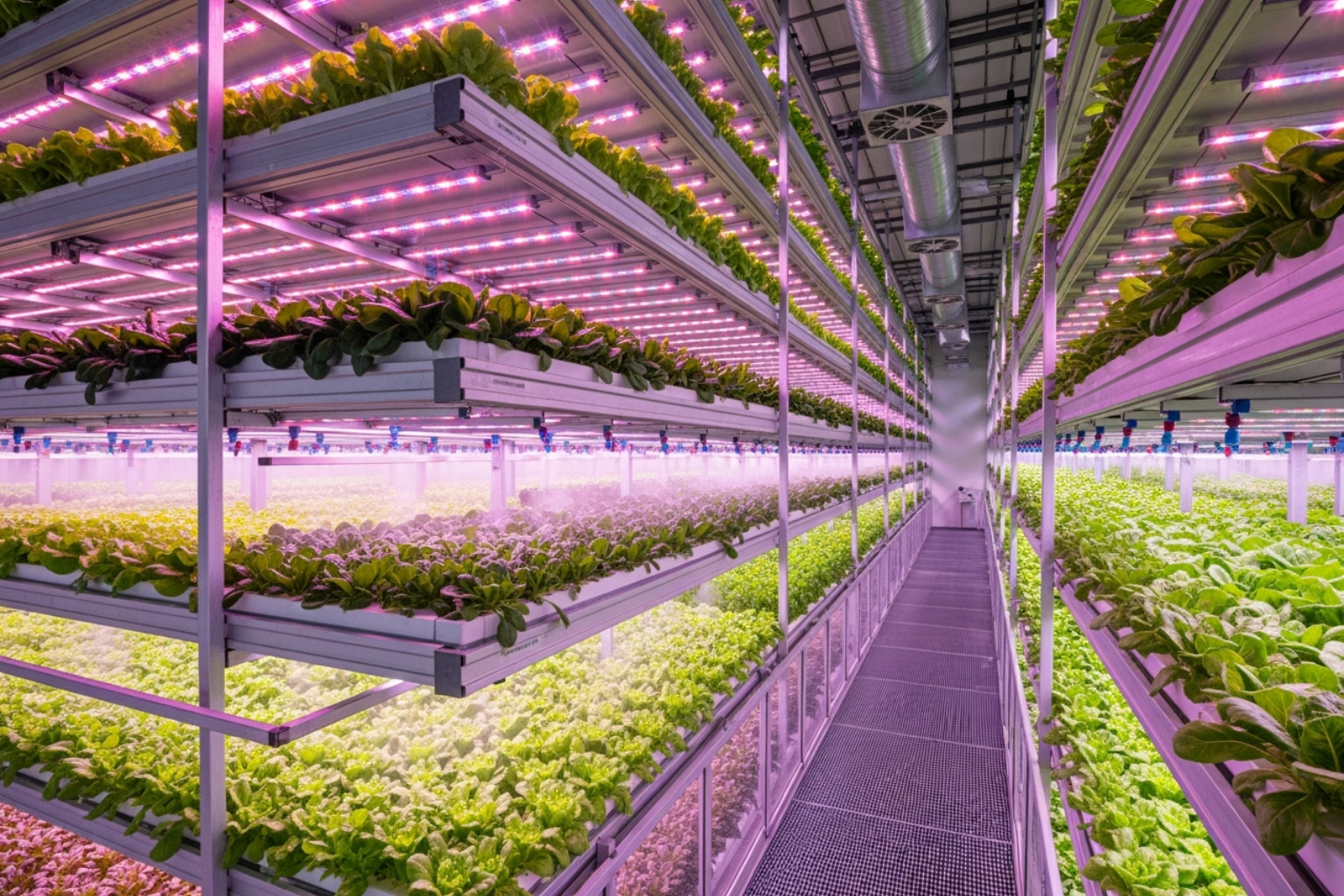
While the challenges are large, human ingenuity is larger. New ideas and technologies are emerging that will reshape how we grow and eat our food. These breakthroughs are building a future where we can feed a growing population while being kind to our planet, creating more sustainable food practices on a grand scale.
High-Tech Harvests and Novel Proteins
Imagine fresh produce growing indoors, year-round, regardless of the weather. That’s the promise of vertical farming and Controlled Environment Agriculture (CEA). These high-tech systems use up to 98% less water and a fraction of the land compared to traditional farms, often without pesticides. They can be located in cities, reducing food miles and delivering fresh greens with a tiny environmental footprint.
In protein, cultivated meat (also called lab-grown) is a major development. It involves growing real meat from animal cells, offering an alternative to resource-intensive traditional livestock farming. Another smart solution is upcycled foods, which transform food byproducts that would otherwise be wasted into new, edible products. This tackles the massive greenhouse gas emissions from food waste. You can learn more about how Upcycled Foods are changing byproducts. Additionally, advanced fermentation technology is creating novel proteins with a much lighter environmental impact.
Tackling Waste with Smart Solutions
Innovators are also finding clever ways to reduce waste. Edible packaging, such as the seaweed-based products from Notpla’s seaweed-based packaging, aims to slash plastic waste by creating a truly circular system. Technology is also streamlining the journey from farm to fork. Smart supply chain technology uses sensors to monitor food freshness during transport, while AI in agriculture helps farmers optimize water and pest management. Finally, biotechnology is developing crops that are more resilient to climate change and disease, reducing the need for chemical inputs and helping to secure our future food supply.
Global Challenges: Food Security, Health, and Equity
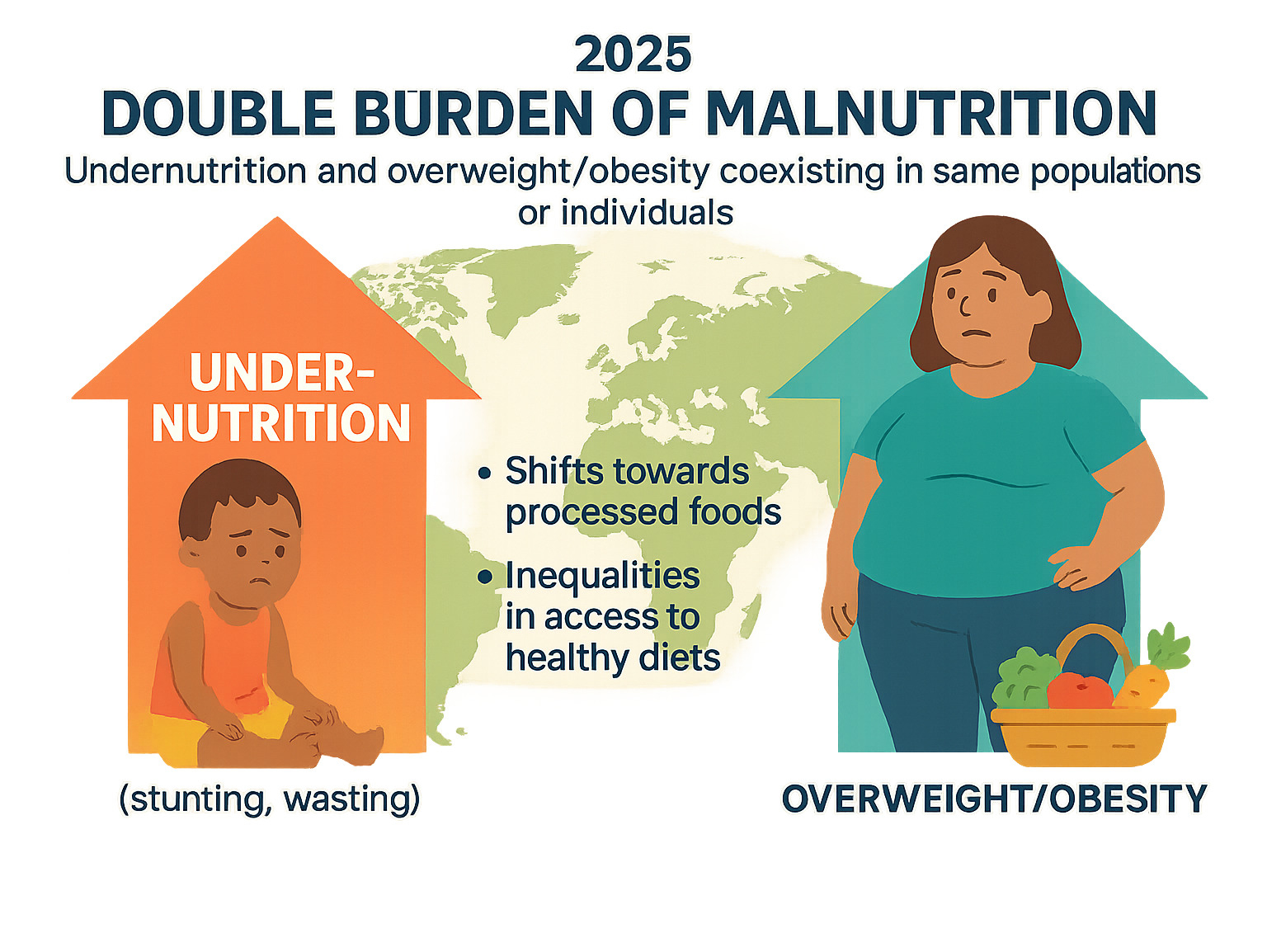
As we pursue sustainable food practices, we must address the interconnected global challenges of food security, health, and equity. It’s not enough to produce food sustainably if it isn’t accessible, affordable, and healthy for all. The UN Sustainable Development Goals provide a critical framework for these issues.
The Connection Between Food Systems and Human Health
Our diets are a leading risk factor for disease and death globally. Unhealthy diets high in red meat and processed foods are a major cause of non-communicable diseases, while intensified agriculture is linked to the rise of zoonotic diseases (transmitted from animals to humans).
- Affordability of Healthy Diets: A healthy diet is unaffordable for approximately 3 billion people worldwide. This is a massive barrier to achieving global health and sustainability goals.
- The Double Burden of Malnutrition: Many countries face a paradoxical crisis where undernutrition (stunting, wasting) coexists with overweight and obesity. This is often driven by a shift towards cheaper, processed foods and unequal access to healthy options.
- COVID-19 Impact: The pandemic worsened food insecurity, increasing the proportion of people in low- and middle-income countries who could not afford a healthy diet from 43% to 50% in its first year.
Barriers to a Sustainable Global Food System
Achieving a sustainable and equitable food supply faces several problems:
- Economic Disparity: Poverty limits access to nutritious and sustainably produced foods, forcing many to prioritize survival over sustainability.
- Policy Gaps: Government policies and agricultural subsidies often favor large-scale industrial farming over smaller, sustainable operations.
- Corporate Consolidation: A few large corporations dominate the global food system, which can stifle innovation and prioritize profit over equity and sustainability.
- Lack of Infrastructure: In many regions, inadequate storage and transport infrastructure leads to significant food loss and limits market access for small farmers. Even in developed areas, ensuring fresh produce reaches all neighborhoods remains a challenge.
- Consumer Awareness: While interest is growing, many consumers still lack awareness about the impact of their food choices. Education is key to empowering individuals to support sustainable food practices.
Conclusion: Every Bite Counts on Your Culinary Journey
We’ve explored the urgent need for sustainable food practices, from simple changes in our kitchens to major innovations in farming and technology. We’ve also seen the importance of ensuring healthy, accessible food for everyone.
The most empowering takeaway is that this global shift starts with us. Every time we choose a plant-based meal, reduce food waste, or buy from a local producer, we contribute to a healthier planet and a fairer food system. These small choices add up to a powerful force for change.
At The Dining Destination, we believe that great food experiences involve connection, culture, and conscious choices. We are passionate about highlighting businesses that accept sustainable food practices, so you can enjoy incredible flavors while supporting a better future.
Let your culinary journey be a force for good. The future of our food is in our hands, and every bite counts. Ready to take the next step? Check out our Sustainable Dining Guides to find your next responsible and delicious meal.

